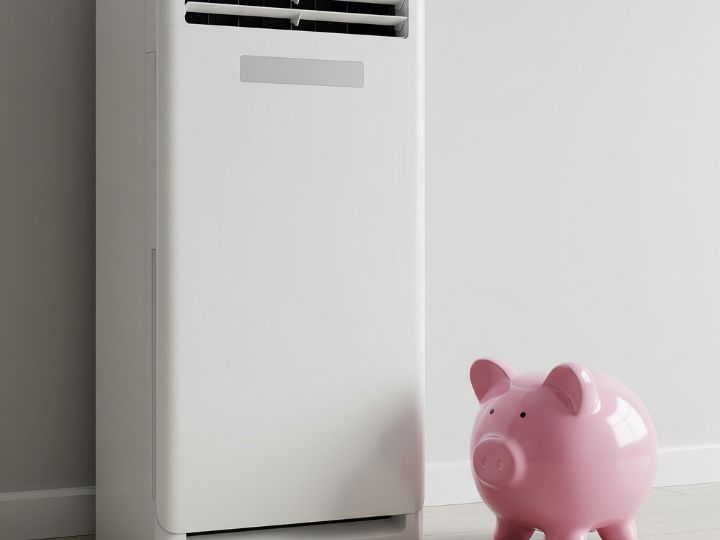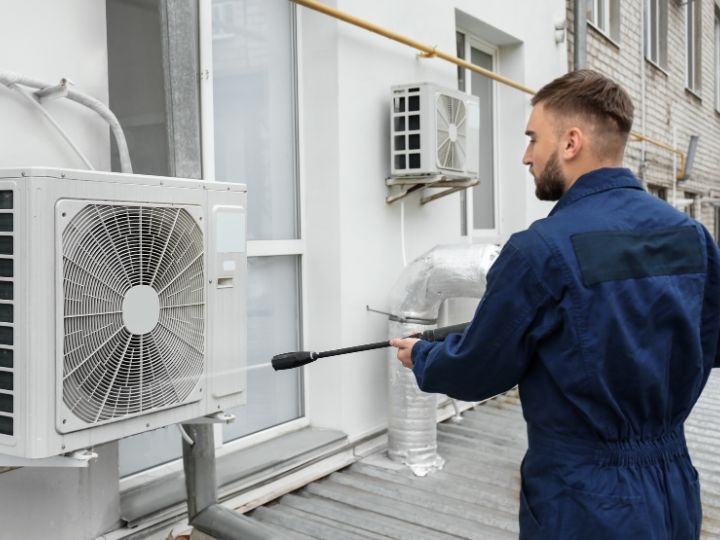Table of Contents
When it comes to staying comfortable and saving money, understanding your air conditioner’s SEER rating is key. This crucial metric doesn’t just affect how much energy your system uses—it also impacts your monthly utility bills and long-term HVAC efficiency. Whether you’re considering a new system or upgrading an old one, knowing how SEER ratings work can help you make smarter decisions. Let’s explore how these ratings influence your cooling costs and why they matter for your home and wallet.
What Is a SEER Rating?
SEER, or Seasonal Energy Efficiency Ratio, is a metric that measures the cooling efficiency of air conditioning systems. It is calculated by dividing the cooling output of an AC over a typical cooling season by the energy it consumes in watt-hours. In simple terms, the higher the SEER rating, the more efficiently your system uses energy.
For example:
- A SEER 14 system consumes more energy to cool your home compared to a SEER 20 unit.
A higher SEER = lower energy bills.
SEER Rating Standards and Regulations
The U.S. Department of Energy has established minimum SEER standards that vary by region:
- Northern U.S.: Minimum SEER of 14.
- Southern & Southwestern U.S.: Minimum SEER of 15.
These regulations aim to reduce energy consumption and promote eco-friendly HVAC solutions. New HVAC systems must comply with these standards, ensuring greater efficiency and performance nationwide.
How SEER Ratings Affect Energy Bills
A unit with a higher SEER rating uses less electricity to produce the same amount of cooling, which leads to noticeable savings on monthly utility bills.
Let’s break it down with an example:
- Suppose your current system is a SEER 10 model.
- Upgrading to a SEER 16 model can result in up to 38% energy savings.
- If your annual cooling costs are $1,000, switching could save you $380 per year.
Over a typical HVAC lifespan of 15–20 years, that’s thousands of dollars in savings.
Cost vs. Savings: Is a Higher SEER Worth It?
Many homeowners hesitate to purchase high-SEER systems due to the upfront cost. It’s true—systems with SEER ratings of 18 or higher come at a premium. However, the long-term savings and efficiency benefits usually outweigh the initial investment.
Key financial considerations:
- Upfront cost: A SEER 14 unit may cost around $3,000–$4,000, while a SEER 20 unit could be $5,000–$7,000+.
- Payback period: The savings on your utility bill often cover the cost difference within 5–7 years.
Tax credits and rebates: Many local utility companies and federal programs offer incentives for high-SEER equipment.

SEER Ratings and Environmental Impact
Choosing an energy-efficient HVAC system doesn’t just benefit your wallet—it’s also better for the planet.
High-SEER systems:
- Reduce your carbon footprint.
- Minimize your home’s greenhouse gas emissions.
- Lower demand on the power grid during peak usage times.
By upgrading to a system with a higher SEER rating, you’re not just investing in efficiency—you’re supporting a more sustainable future.
Comparing SEER Ratings: What the Numbers Really Mean
Here’s a simplified breakdown to help visualize the potential impact on your wallet:
SEER Rating | Efficiency Gain (vs. SEER 10) | Estimated Annual Cooling Cost |
SEER 10 | Baseline | $1,000 |
SEER 14 | ~29% more efficient | $710 |
SEER 16 | ~38% more efficient | $620 |
SEER 18 | ~44% more efficient | $560 |
SEER 20+ | ~50%+ more efficient | $500 or less |
These values vary depending on climate, home size, insulation, and thermostat usage—but they clearly illustrate the potential for long-term savings.
What SEER Rating Should You Choose?
Choosing the right SEER rating depends on several factors:
- Your Climate
In hotter regions with extended summers, like the South or Southwest, air conditioners run more frequently and for longer periods. Choosing a higher SEER rating system ensures greater HVAC efficiency, reducing energy consumption and monthly costs. This investment pays off faster in such climates due to the increased cooling demand year-round. - Frequency of Use
If your home relies on air conditioning daily, a high-SEER unit (SEER 18 or above) offers the best energy savings and comfort. However, for seasonal or occasional use, a mid-range SEER system (14–16) may be sufficient. Consider how often your HVAC system operates when deciding which efficiency level suits your needs. - Budget and ROI
Higher SEER systems come with a larger upfront cost but offer significant long-term savings on energy bills. Evaluate your budget and how long you plan to stay in your home. For long-term homeowners, investing in a top-tier SEER system maximizes returns and enhances comfort over the system’s lifespan.
Understanding SEER2: The Latest Standard
As of 2023, the SEER2 standard has been introduced to provide more accurate real-world energy efficiency ratings. SEER2 uses updated testing procedures to reflect external static pressure and ductwork resistance.
Key differences:
- SEER2 ratings are slightly lower than SEER but represent more realistic performance.
- A SEER 15 system might be equivalent to SEER2 14.3.
When shopping, make sure you compare SEER2 ratings if listed—manufacturers now label equipment with both SEER and SEER2.
Maintenance and SEER Efficiency: Don’t Neglect It
Even the most efficient HVAC system won’t perform well if it’s poorly maintained. Proper care ensures your system continues operating at its rated SEER level.
Best practices to maintain efficiency:
- Replace filters monthly or as recommended.
- Clean condenser coils and ducts regularly.
- Schedule annual professional HVAC services for thorough inspections.
- Seal and insulate ductwork to prevent air leaks.
Maintaining your system protects your investment and keeps your bills low.

Conclusion: Make SEER Ratings Work for You
Understanding your air conditioner’s SEER rating is more than just knowing a number—it’s about unlocking smarter energy use, lower utility bills, and improved HVAC efficiency for your home. By choosing a system with a higher SEER rating, you’re making an investment in long-term savings and consistent comfort, all while reducing your environmental impact. Whether you’re upgrading an old unit or planning a new installation, this knowledge empowers you to select a system that fits your lifestyle and climate needs.
Remember, even the most efficient system requires proper care to maintain its peak HVAC efficiency. Routine maintenance and professional checkups from a trusted HVAC service company provider like HVAC Alliance Expert keep your air conditioning running at its rated SEER level. Contact us today to protect your investment and ensure your home stays cool without breaking the bank.
FAQs
A higher SEER rating means your HVAC system uses less energy to cool your home, which leads to lower monthly utility bills. Over time, this can result in significant savings, especially in warmer climates.
Yes, while high-SEER units have a higher upfront cost, they often pay for themselves within a few years through energy savings. Plus, many qualify for rebates or tax credits to help offset the cost.
SEER2 uses updated testing methods that better reflect real-world conditions, like ductwork resistance. As a result, SEER2 ratings are slightly lower but provide a more accurate measure of system efficiency.
No, SEER ratings measure efficiency, not cooling power. Both low and high SEER units can maintain the same temperature, but higher SEER systems do it using less energy.
Regular maintenance, like replacing filters and cleaning coils, helps your system run at peak efficiency. Annual professional tune-ups also ensure your unit performs to its rated SEER level.


